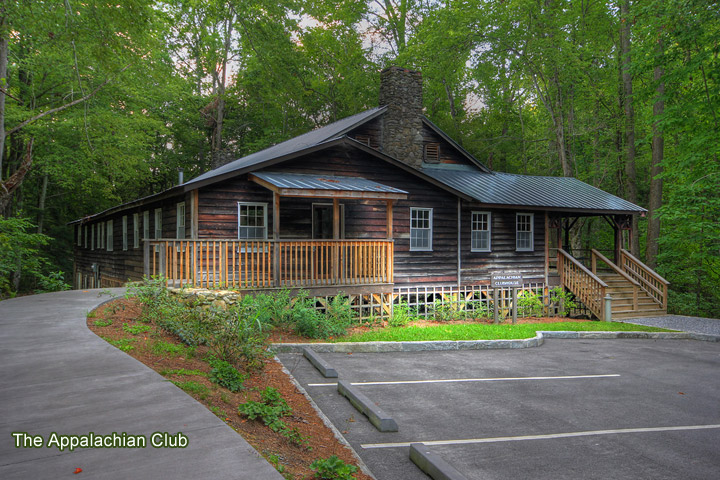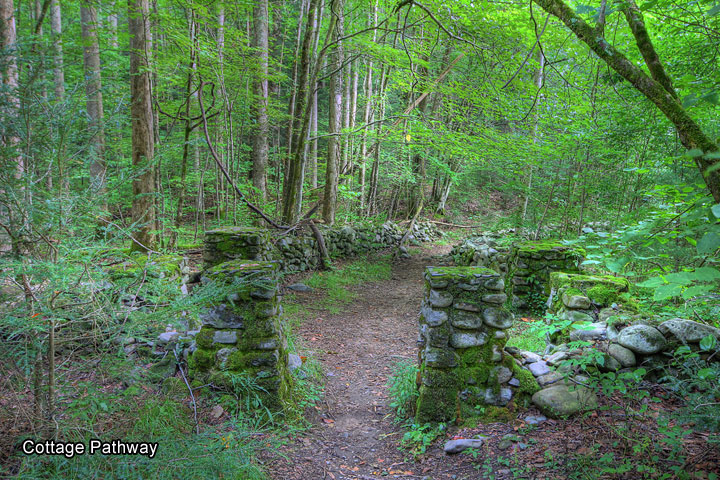


If you’ve ever been to the Elkmont campground in the Great Smoky Mountains or hiked on the Little River Trail, then you’ve seen the remnants of the Elkmont “ghost town,” the area where numerous old homes stand in various states of disrepair.
Located next to the former logging town of Elkmont (where the Elkmont Campground now stands), this old “ghost town” had its start as the” Appalachian Club” vacation community. The land was once owned by the Little River Lumber Company. Around 1910, the company began selling the land to individuals, mainly hunting and fishing enthusiasts, for the purpose of creating a private social club. The Appalachian clubhouse itself was used as a lodge but within a few years many members began building their own vacation cottages. In 1912, the Wonderland Park Hotel, a 50-room resort lodge was also constructed nearby.
selling the land to individuals, mainly hunting and fishing enthusiasts, for the purpose of creating a private social club. The Appalachian clubhouse itself was used as a lodge but within a few years many members began building their own vacation cottages. In 1912, the Wonderland Park Hotel, a 50-room resort lodge was also constructed nearby.
However, with membership in the Appalachian Club becoming more difficult to obtain, in 1919, a group of Knoxville businessmen purchased the Wonderland Hotel and created the “Wonderland Club”. Around 10 or more cottages were also constructed on the hill near the hotel. The Appalachian Club and the Wonderland Club became favorite vacation spots for wealthy east Tennessee families to come and socialize and escape the summer heat.
Elkmont soon became home to the birth of the national park movement. In 1920, soon after a visit to Yellowstone, Willis P. Davis, a cottage owner at Elkmont, began to suggest the idea of a national park in the Smokies. Another Elkmont land owner, David C. Chapman, soon took up the cause and helped advance it. Realizing the benefits of a national park, several influential Knoxville businessmen began lobbying federal and state governments.
The U.S. government eventually agreed to establish the national park if the states of Tennessee and North Carolina purchased the land. Once again, the Knoxville businessmen strongly lobbied the Tennessee State legislature and in 1925, Chapman hosted a group of the legislators at Elkmont in order to help convince them of the plan. The following year Colonel Wilson B. Townsend, the founder of the Little River Lumber Company, made the initial sale of 76,000 acres. While most everyone else within the park boundaries were forced to sell their properties and relocate, the Elkmont cottage owners were able to sell their cottages at half price in exchange for lifetime leases.
Most of the leases for the cottages and the Wonderland Hotel expired in 1992, with two more expiring in 2001. Upon expiration ownership of the properties reverted back to the National Park Service and in 1982 the park called for all structures to be removed and to allow the area to return to its natural state. In 1994, however, the Wonderland Hotel and many of the cottages were placed on the National Register of Historic Places which protected them from being destroyed, so a debate raged on what to do with the structures.
In 2005, the Wonderland Hotel collapsed and in 2009 the National Park Service announced the intention of restoring the Appalachian Clubhouse and 18 cottages in the Appalachian Club section. 17 of the 19 structures to be renovated are located in what was known as the “Daisy Town” section of the Appalachian Club. The other two structures to be preserved are located in the “Millionaire’s Row” and “Society Hill” sections of the Appalachian Club. All other buildings are to be documented and removed.
renovated are located in what was known as the “Daisy Town” section of the Appalachian Club. The other two structures to be preserved are located in the “Millionaire’s Row” and “Society Hill” sections of the Appalachian Club. All other buildings are to be documented and removed.
To get to Elkmont go to the Sugar Lands Visitors Center on 441 and turn right, then go about 4.5 miles and you will see signs for the Elkmont campground on your left.

Comments are closed.